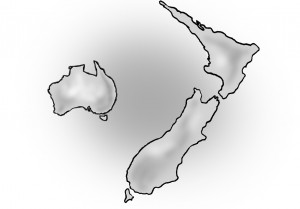From the mid 1970s to 1990, kiwis would tune in every week to watch a popular TV show called “Top Town” in which contestants from all over the country, whether from the tiniest of towns or biggest cities, competed through many different obstacle challenges to determine New Zealand’s “Top Town”…for that week. Though we are still waiting for our .id obstacle course development plans to be approved, I thought I’d look at New Zealand’s “top towns” by going to our bread and butter – demographic information.

Late last month Statistics New Zealand released subnational population estimates for the year to 30th June 2012. Our introductory article covered the background to these releases and focussed on one area topical to New Zealand in recent times– Christchurch and Canterbury. This second blog entry will cover some other key points of interest to come out of the subnational population estimates and provide some context as to why these may be occurring.
1) Top 5 Fastest Growing Regions
Of the five fastest growing regions in New Zealand that contributed to the national 0.6% (28,000) population growth (June 2011-12), Auckland accounted for 21,700 as seen in the charts below. See section 3 for more information.
Top growth regions by percentage (Year ended June 2012)

Source: Statistics New Zealand
The 0.6% growth was lower than the 0.9% for the previous year and the lowest level of population growth since 2001. In fact, all regions experienced slower population growth in the June 2012 year than in the previous year. This can be credited to the ongoing effects of the global financial crisis (GFC), higher international migrant departures (up 9%), a lower natural increase with births decreasing by 3% and deaths increasing by 2%.
Other high growth regions (by percentage) were Waikato, led by Hamilton city’s growth over the past year (2,500/1.7%). While the Nelson region experienced the same percentage of growth as Waikato there was a much lower absolute numbers increase (370 compared to Waikato’s 3,100). Both Tasman and Otago experienced growth rates on par with the national rate (0.6%)
Top growth regions by absolute numbers (Year ended June 2012)

Source: Statistics New Zealand
In absolute numbers, Auckland is the clear leader. The top three areas of population growth are all North Island regions and led by the growth of their main cities (Auckland, Hamilton and Wellington). The Wellington region’s growth for the June 2012 year was third highest by number but 1,900 less than the previous five-year (to 2011) annual change, calculated as a constant rate of population change over the period. Otago’s net 0.6%/1,300 combines Dunedin city’s growth (920) but also the growth of the popular Queenstown-Lakes district (1.6%/450). The Taranaki region, led by New Plymouth’s growth of 0.6%/420) rounds off the top five growing regions over the past year.
Growth in regions by annual average over five year period to 2011

Source: Statistics New Zealand
Looking at the five-year average annual change, Auckland is still the absolute leader with 22,600, followed by almost equal Wellington, Canterbury and Waikato regions. The inclusion of Canterbury here as the third largest growing region (4,100 per year average) is a total opposite of the 1,800 loss they experienced June 2011-2012. As mentioned, the Wellington region experienced high growth in the five year period to 2011 though the growth in the June 2012 year was 44% lower than the previous five-year average.
2) Top 5 Fastest Declining/Lowest Growing Regions
Largest population losses by percentage (Year ended June 2012)
.png?width=577&height=359&name=GRAPH-4-Largest-population-losses-by-percentage-Year-ended-June-2012%20(1).png)
Source: Statistics New Zealand
Absolute population losses and slowest growth (Year ended June 2012)

Source: Statistics New Zealand
As expected, the region with most population lost in 2012 was Canterbury. The loss of 4,600 persons in Christchurch city was offset by the surrounding TAs growth, thus reducing Canterbury’s overall population decline to -1,800. Hawke’s Bay also lost population with the Wairoa district responsible for 62% of that region’s loss. The sub-regional TAs on the West Coast (Buller, Grey, Westland) contributed to an overall regional loss of 40 where Buller’s population gain was outstripped by Grey and Westland’s population decline.
Slowest growth in regions by annual average over five year period to 2011

Source: Statistics New Zealand
When analysing the five year annual average change – Canterbury is nowhere to be seen on the list of regions with population loss/lowest growth. This is because prior to the earthquakes, Canterbury experienced annual growth of 0.8% (4,100 p/a), third highest in New Zealand. No region experienced a loss over the five-year period average but Gisborne, West Coast, Southland, Nelson and Marlborough had the least absolute growth whereas Gisborne, Manawatu-Wanganui, Southland, Hawke’s Bay and Taranaki experienced the lowest average percentage of population growth over the five years to 2011.
3) Top regional growth and decline
Share of regional growth (to year ended June 2012)

Source: Statistics New Zealand
(“Others” includes these regions: Nelson, Tasman, Gisborne, Bay of Plenty, Manawatu-Wanganui, Northland, Marlborough, Southland, West Coast, Hawke’s Bay, Canterbury)
As discussed earlier, Auckland is responsible for almost ¾ of New Zealand’s growth in the past year. The next largest share belongs to the Waikato region which adjoins the Auckland region to the south. Combined they account for 80.5% of population growth for the June 2012 year. The cities of Auckland, Hamilton, Wellington and Palmerston North had 98% of the North Island’s population growth in the same period.
Share of regional growth (five-year average to June 2011)

Source: Statistics New Zealand
Over the five year period to June 2011, Auckland still dominated more than half of “the population growth pie” but other regions such as Wellington, Canterbury and Waikato had larger shares than in the June 2012 year. Bay of Plenty grew at 0.9% and smaller regional contributors (“grouped as Others”) had 14.4% of the total national population growth compared to just 3.8% in the June 2012 year.
Share of regional population decline (to year ended June 2012)

Source: Statistics New Zealand
The polar opposite of Auckland’s population growth share (not by absolute numbers) is Canterbury’s population decline over the last year, accounting for 83% of the overall population decline in New Zealand.
4) Top 3 Fastest Growing TAs (Year ended June 2012)
Selwyn district – 2.9%, Hurunui – 1.8% and Ashburton – 1.7%. These are three TAs around Christchurch City where residents of the quake affected city would have moved to and perhaps even commuted from back to their places of employment in Christchurch or found new work near their new homes. The journey to work data from the upcoming 2012 Census may give us some insight into this. Personally, I know half a dozen people who have moved offices and homes from Christchurch to Prebbleton and Lincoln (Selwyn district).
5) “Young’uns” – Top 3 TAs with lowest median ages
Hamilton (31.7), Palmerston North (32.4), Wellington (33.6), (also Porirua, bordering Wellington with same median of 33.6) have the youngest median populations in New Zealand. This could be associated with a high proportion of children but also these three cities all have universities so that would help lower the median age. Wellington is especially popular with highly skilled young professionals who have either studied there or moved for employment opportunities. Furthermore, in the past 5-10 years both Wellington and Hamilton are attracting young professionals/new business start-ups though I do not have the figures to assume this for Palmerston North.
6) “Graying Towns” – Top 3 TAs with highest numbers of people aged 65+
Nationally, the number of people over the age of 65 is increasing everywhere concurrently with increased life expectance. This is a phenomenon prevalent in most OECD countries.
The top three TAs with the highest population aged 65+ are Kapiti Coast, where retirees from the greater Wellington region move to, Thames-Corramandel which attracts retirees from Auckland and Hamilton move to and finally – Horowhenua. A migration of older people from fast-paced city environments to quiet, scenic and affordable regions coupled with a net loss of younger people to those urban centres raises the median age and the proportion of the population aged 65+. Thames-Corromandel and Kapiti Coast actually experienced natural decrease in population in the June 2012 year where more deaths occurred than births.
Our understanding of the dynamics of New Zealand’s population and its “top towns” will only progress as we look forward to the 2013 Census of Population and Housing in New Zealand. A special thanks to my colleague Esther for assisting with this blog.
To access more demographic resources, visit here. Subscribe to our blog feed and follow us on Twitter (@dotid) if you would like to receive the latest demographic news!






.png?width=577&height=359&name=GRAPH-4-Largest-population-losses-by-percentage-Year-ended-June-2012%20(1).png)














